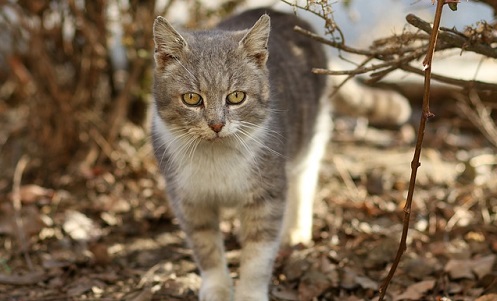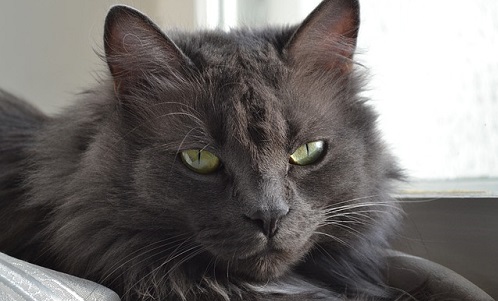Factors such as quality and quantity of ingredients truly matter when it comes to food. An increased focus on a balanced diet has led us to make more informed decisions when it comes to food. But what about cat food? When shopping for your kitty, do you consider these same factors? Cat food generally comes in two forms: wet and dry. What are the differences between the two? Is one better than the other? Well, it depends. If you haven’t looked into the differences between wet and dry food and the importance of food quality, it’s not too late to start! Both dry and wet foods have their advantages, so which should you choose?
What Cats Need
Cats generally require more muscle-based meats in their diets. Specifically, it’s an amino acid called Taurine, found in the muscles of animals, that helps felines thrive. Because cats are essentially full-time carnivores, they have shorter digestive systems not necessarily meant for cellulose, which is found in plants. Cellulose is tougher to break down, so introducing this into a cat’s mainstream diet can result in digestive problems.
 This is why it’s important to introduce the appropriate ratio of animal-based protein and plant ingredients in your cats food. Also – and this is important – do away with food that contains any unnecessary fillers like meat and cereal by-products or corn and rice bran. Now, let’s get into the “meat” of this blog and discuss the differences between dry and wet food.
This is why it’s important to introduce the appropriate ratio of animal-based protein and plant ingredients in your cats food. Also – and this is important – do away with food that contains any unnecessary fillers like meat and cereal by-products or corn and rice bran. Now, let’s get into the “meat” of this blog and discuss the differences between dry and wet food.
Dry Food
Dry food is easy to store and you can leave it out in a bowl for longer periods of time without spoiling, allowing your kitty to eat at his own pace. From an economical perspective, dry food is superior. It’s tough to say no to a big bag of dry food that provides two to three times the quantity at less than half the price of wet food. Furthermore, what’s often overlooked is dry food has less of a negative impact on dental hygiene. While it’s difficult to say if dry food can actually clean your cat’s teeth (this is the subject of much debate), some brands are delivering dry food with this goal in mind.
However, dry food does have its downsides. First and foremost, it lacks the level of animal-based proteins and the amino acid (Taurine) your cat needs. In general, lower quality dry food tends to be less nutritional for your feline friend. Dry food is also missing another key nutritional ingredient – water. If you solely feed your cat dry food, it’s important he drinks at least one cup of water for every ten pounds of body weight. Water is critical for all cats, especially those who are ill or older. Furthermore, cats on dry food diets are more prone to obesity and diabetes. A big reason for this is dry food tends to be left out, allowing cats to eat at will rather than being given a certain portion of food in one sitting.
Wet Food
Where dry food falls short, wet food excels. It typically contains more meat-based protein, more natural fats, and less carbohydrates than its dry food counterpart. Also, unlike dry food, it helps hydrate your cat. Plus, because it’s wet, it also helps make your cat feel fuller, faster thus regulating the amount they eat which helps prevent overeating. Wet foods are generally more efficient in providing cats with the appropriate vitamins, minerals, and proteins they need. Many forms of wet food contain those all-important amino acids your kitty needs.
 So, wet food wins, right? Well, not necessarily. It all comes down to quality. A low-quality wet food is not as good for your cat as a high-quality dry food. Regular consumption of wet food can potentially lead to dental problems if your cat doesn’t receive regular checkups. Also, from a practicality standpoint, wet food has a shorter shelf life once opened and it’s typically more expensive.
So, wet food wins, right? Well, not necessarily. It all comes down to quality. A low-quality wet food is not as good for your cat as a high-quality dry food. Regular consumption of wet food can potentially lead to dental problems if your cat doesn’t receive regular checkups. Also, from a practicality standpoint, wet food has a shorter shelf life once opened and it’s typically more expensive.
What to Choose?
It all comes down to one word … quality. Read the packaging. This is key. Check the ingredients to see what’s actually in the food you’re buying. Premium brands often carry greater nutritional value and much less of those fillers and other ingredients your cat doesn’t need. Animal-based proteins, essential vitamins, and amino acids are some things to look for. Sometimes a combination of quality wet and dry food can be a good way to give your cat the best of both worlds. While premium brands and higher quality foods may be more expensive, they may save you money in vet visits in the long run. Invest in your cat’s health and well-being. With a keen eye for quality, you can make confident choices that’ll keep your cat happy and healthy!
Sources:
HQ, Catster. “The Wet Cat Food Vs. Dry Cat Food Debate.” Catster, 8 Nov. 2018, www.catster.com/cat-food/wet-cat-food-vs-dry-cat-food.
“Wet Food vs. Dry Food For Cats.” Cat Health, www.cathealth.com/cat-care/nutrition/1229-cat-wet-dry-food.
Williams, Olivia. “Dry Vs Wet Food For Cats: Which Is Better?” My Pet Needs That, 30 Nov. 2018, www.mypetneedsthat.com/dry-vs-wet-food-for-cats/.




